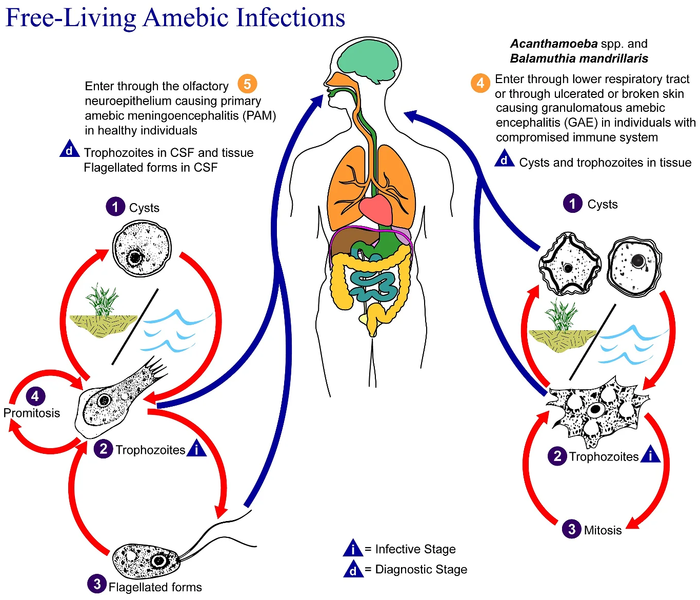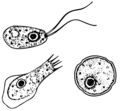Fitxer:Free-living amebic infections.png
Aparença

Mida d'aquesta previsualització: 700 × 600 píxels. Altres resolucions: 280 × 240 píxels | 560 × 480 píxels | 896 × 768 píxels | 1.195 × 1.024 píxels | 1.365 × 1.170 píxels.
Fitxer original (1.365 × 1.170 píxels, mida del fitxer: 715 Ko, tipus MIME: image/png)
Historial del fitxer
Cliqueu una data/hora per veure el fitxer tal com era aleshores.
| Data/hora | Miniatura | Dimensions | Usuari/a | Comentari | |
|---|---|---|---|---|---|
| actual | 11:24, 2 feb 2023 |  | 1.365 × 1.170 (715 Ko) | Materialscientist | https://answersingenesis.org/biology/microbiology/the-genesis-of-brain-eating-amoeba/ |
| 08:30, 20 jul 2008 |  | 518 × 435 (31 Ko) | Optigan13 | {{Information |Description={{en|This is an illustration of the life cycle of the parasitic agents responsible for causing “free-living” amebic infections. For a complete description of the life cycle of these parasites, select the link below the image |
Ús del fitxer
No hi ha pàgines que utilitzin aquest fitxer.
Ús global del fitxer
Utilització d'aquest fitxer en altres wikis:
- Utilització a de.wikibooks.org
- Utilització a en.wiktionary.org
- Utilització a fi.wikipedia.org
- Utilització a fr.wikipedia.org
- Utilització a gl.wikipedia.org
- Utilització a hr.wikipedia.org
- Utilització a is.wikipedia.org
- Utilització a it.wikipedia.org
- Utilització a pl.wikipedia.org
- Utilització a te.wikipedia.org
- Utilització a vi.wikipedia.org
- Utilització a www.wikidata.org
- Utilització a zh.wikipedia.org





